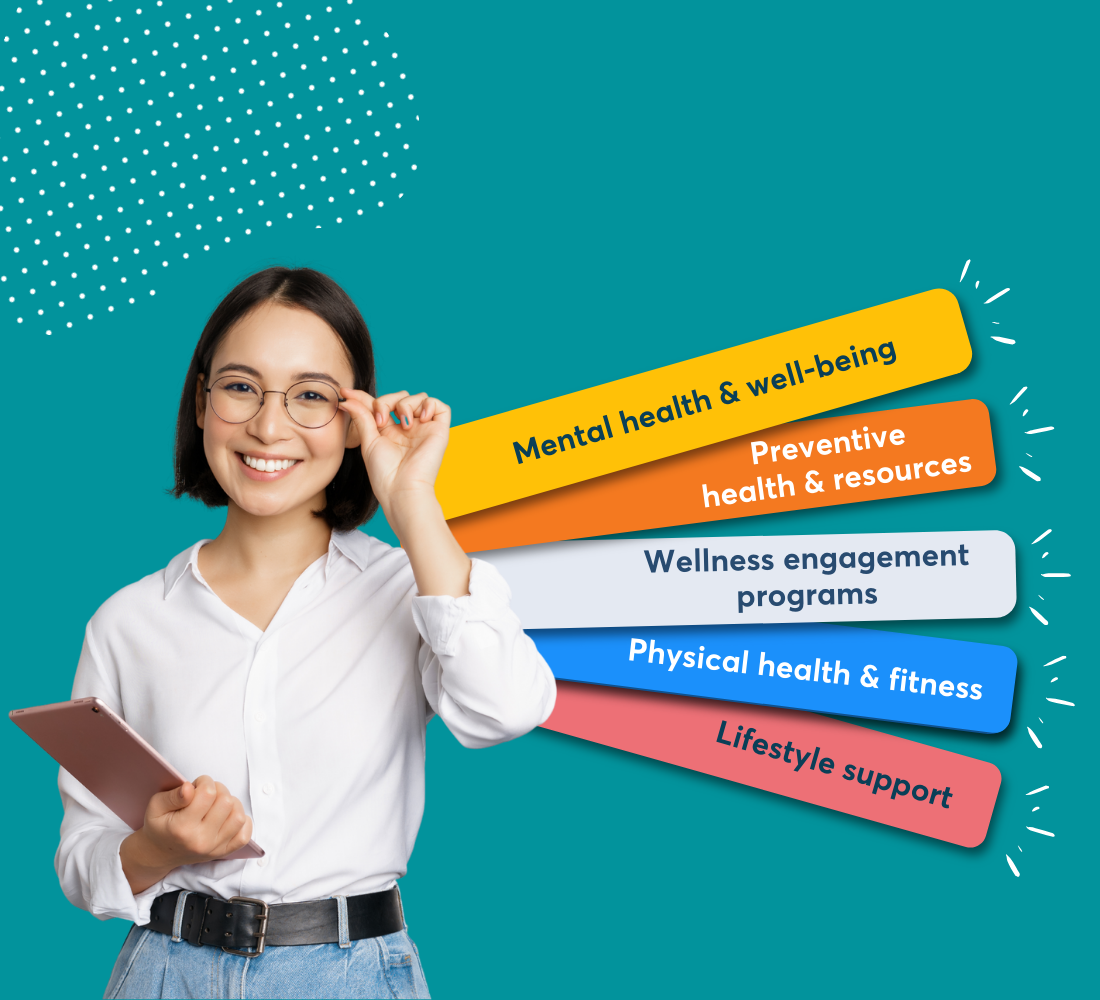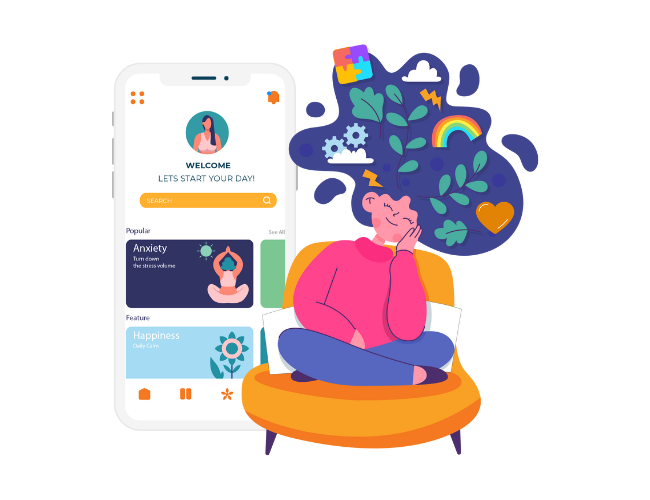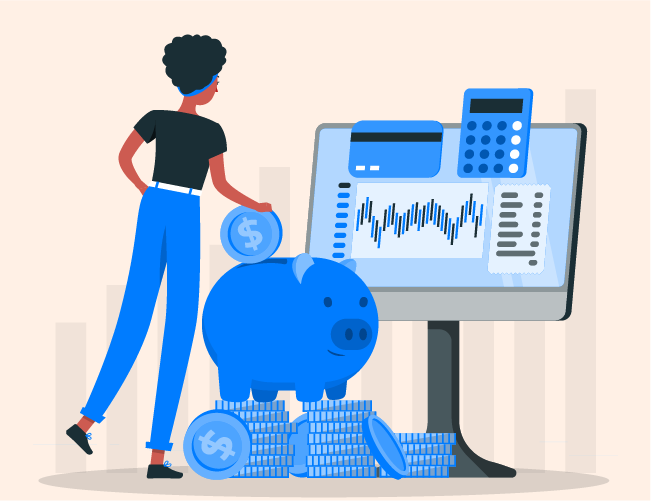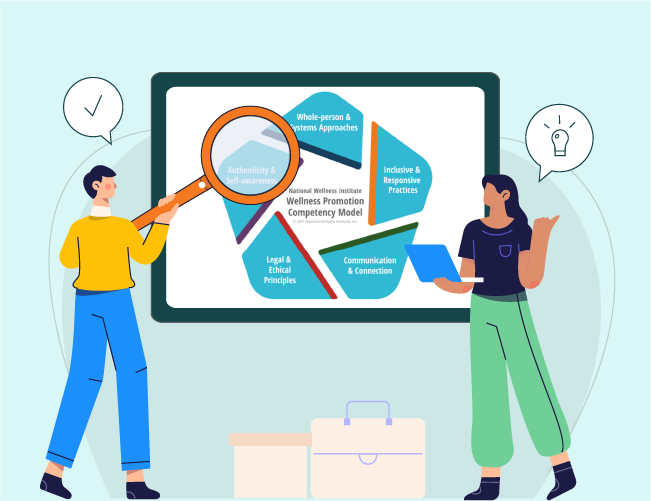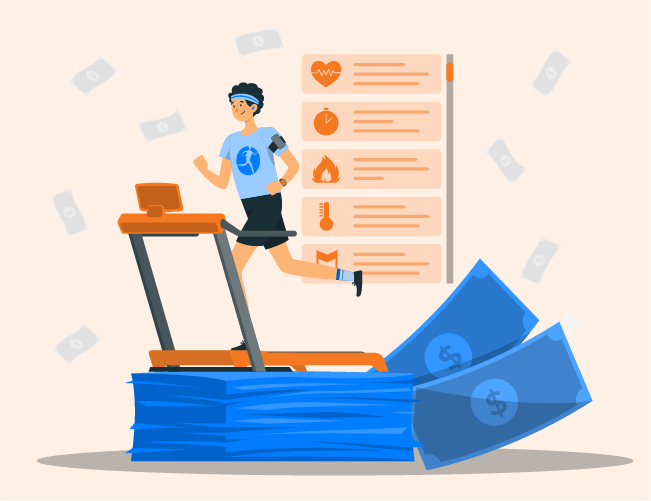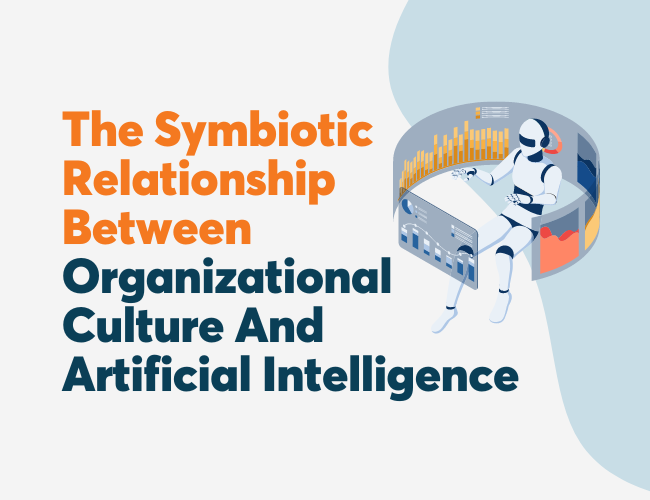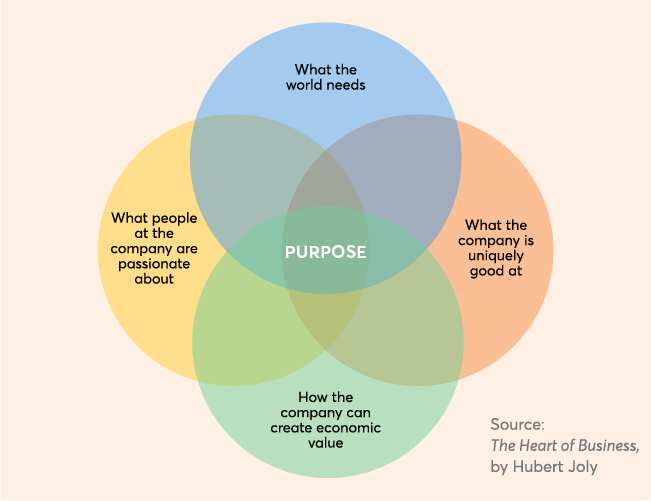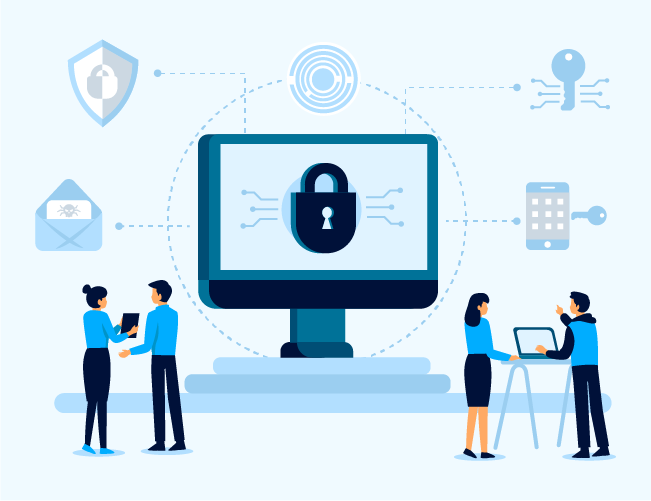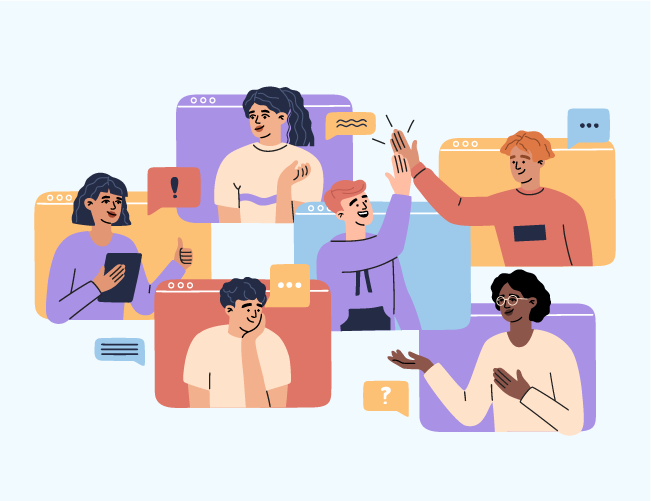Short on time? Here are the key takeaways:
- Plan a mix of educational events (e.g., benefit provider webinars, health coaching sessions) and wellness experiences (e.g. fitness classess, meditation sessions).
- Extend the impact with on-demand content like pre-recorded webinars, downloadable resources, and welless tools to increase reach and long-term value.
- Drive participation with early promotion using multiple communication channels, calendar invites, and reminders.
- Boost engagement with interactive elements like community chats and rewards like wellness points or giveaways.

A health fair is a workplace event where employees can explore wellness resources, learn about benefits offerings, and discover ways to improve their health and well-being. Traditionally held in person, health fairs are designed to educate employees on topics ranging from nutrition and fitness to mental health and financial wellness, empowering them to live healthier lives.
With the popularization of hybrid and remote workstyles, virtual health fairs provide a flexible and inclusive alternative to in-person events, eliminating location barriers and expanding access to a broader range of speakers, vendors, and experiences. When done right, they can boost awareness of company benefits, build engagement, and jumpstart a culture of year-round wellness.
Three Elements of a Successful Virtual Health Fair
1. Events That Educate and Empower
At the core of a virtual health fair are structured events that deliver lasting value and equip employees with tools to support their ongoing well-being. These sessions focus on various components of healthy living and benefits accessibility and navigation, providing a strong foundation for workplace well-being. Below are a few examples:
- Benefits provider sessions: Virtual formats bring benefits providers directly to employees. Host live webinars or one-on-one Q&A sessions where employees can learn more about their health, dental, and vision plans, EAP (Employee Assistance Program) offerings, Lifestyle Spending Accounts, reimbursement programs, and more in a convenient format. This supports benefits awareness, improves accessibility, and helps employees navigate their benefits with confidence.
- Wellness education webinars: Invite subject matter experts to lead webinars on physical, mental, financial, social, and emotional wellness. From managing stress well to budgeting smarter, these educational sessions expand employees’ personal wellness toolkits and support whole-person health.
- Health coaching: Provide access to certified health coaches who can guide participants in setting personalized goals and adopting healthier habits. These sessions focus on long-term lifestyle change and are particularly valuable for individuals navigating stress, nutrition, sleep, or fitness goals.
2. Content That Supports Ongoing Wellness
Complement live events with well-curated, science-backed health content that employees can explore on their own time. By offering flexible, asynchronous materials, you extend the impact of your health fair beyond the dates of the event and meet employees where they are at in their wellness journeys. Examples include:
- Pre-recorded webinars from wellness experts on topics like mental resilience, healthy eating, or mindfulness
- Downloadable materials like tip sheets, infographics/flyers, or wellness challenge templates
- Interactive quizzes or wellness assessments that allow employees to reflect on their current habits and identify areas for improvement
- Resource libraries linking to internal benefits, community programs, or national health tools
This content reinforces messaging from live sessions while ensuring all employees, regardless of time zone or schedule, have the opportunity to engage and grow.
3. Experiences That Recharge and Connect
Offer breaks from a traditional learning format by offering activities that energize teams, boost morale, and encourage participation. Interactive sessions help employees kickstart healthy habits during the event, not just learn about them. Below are a few examples:
- Live fitness classes: Offer virtual classes that suit different preferences and mobility levels, such as chair yoga, tai chi, kickboxing, or dance. These sessions bring movement into the workday and promote physical activity in an inclusive, fun way. For added team competition, launch a fitness challenge during the event.
- Relaxation and self-care sessions: Work-from-home setups can lead to chronic pain and fatigue if not addressed. Offer virtual ergonomic consultations or self-massage, self-reflexology, guided breathwork, or meditation sessions to help employees address root causes of pain and enhance their mind-body connection. These sessions can lead to more daily comfort and reduced stress levels.
- Team bonding activities: Engage employees in wellness through creativity and joy. Mix in opportunities for employees to connect and make memories together, whether through a mocktail-making session, virtual bingo, or cooking demonstration.
These experiences support health, enhance culture, foster camaraderie, and create memorable touchpoints that connect employees to the broader mission of holistic well-being.
Turn Participation into Impact
Even the most thoughtfully curated health fairs can struggle to deliver impact without strong promotion and engagement strategies. To get the most value from your virtual event, focus on driving attendance and keeping employees actively involved from start to finish.
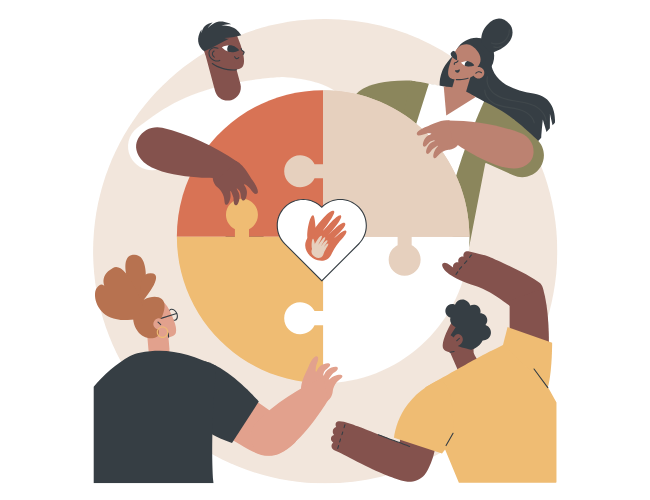
Driving Attendance through Awareness and Accessibility
Virtual health fairs often attract higher attendance than their in-person counterparts because of their convenience and accessibility, but that doesn’t mean employees will automatically attend. A proactive promotion strategy includes:
- Internal promotion campaigns: Start communicating the event details, themes, and purpose at least a month in advance using email, Slack, intranet sites, digital reminders, and announcements at team meetings. On event day, keep the momentum going with real-time reminders and active communication to boost turnout.
- On-demand access: Record all sessions and make them available post-event. This ensures employees who can’t attend live can still access the content when it suits their schedule, extending the health fair’s reach and value.
- Seamless technology experience: Minimize friction by ensuring the entire experience is smooth and user-friendly. Send calendar invites with direct links, offer a central landing page for event access, and test all platforms in advance to proactively catch issues. Consider having live tech support or a help chat available during the event to assist anyone who runs into technical difficulties.
Encourage Meaningful Participation Through Incentives and Support
Virtual fatigue can quickly set in during full- or multi-day events. Without interactive elements, it’s easy for attendees to tune out. To keep energy high and minds focused, build in features that encourage active participation and real-time connection.
- Incentives and rewards: Introduce gamification elements like quizzes, digital scavenger hunts, or engagement challenges. Offer rewards, such as wellness points, raffle entries, or branded swag to incentivize participation and reinforce learning.
- Community chat and live support: Create space for interaction without the pressure of speaking up on camera. Live community chat features, moderated Q&As, or virtual support chats make it easier for attendees to ask questions, engage thoughtfully, and clarify information.
Conclusion
With the right mix of events, experiences, and content, as well as a comprehensive engagement strategy, virtual health fairs can be a powerful catalyst for a thriving workplace culture of wellness. A thoughtfully planned and executed event will ensure employees walk away informed, inspired, and empowered to engage in workplace well-being initiatives and their own wellness journeys all year long.
